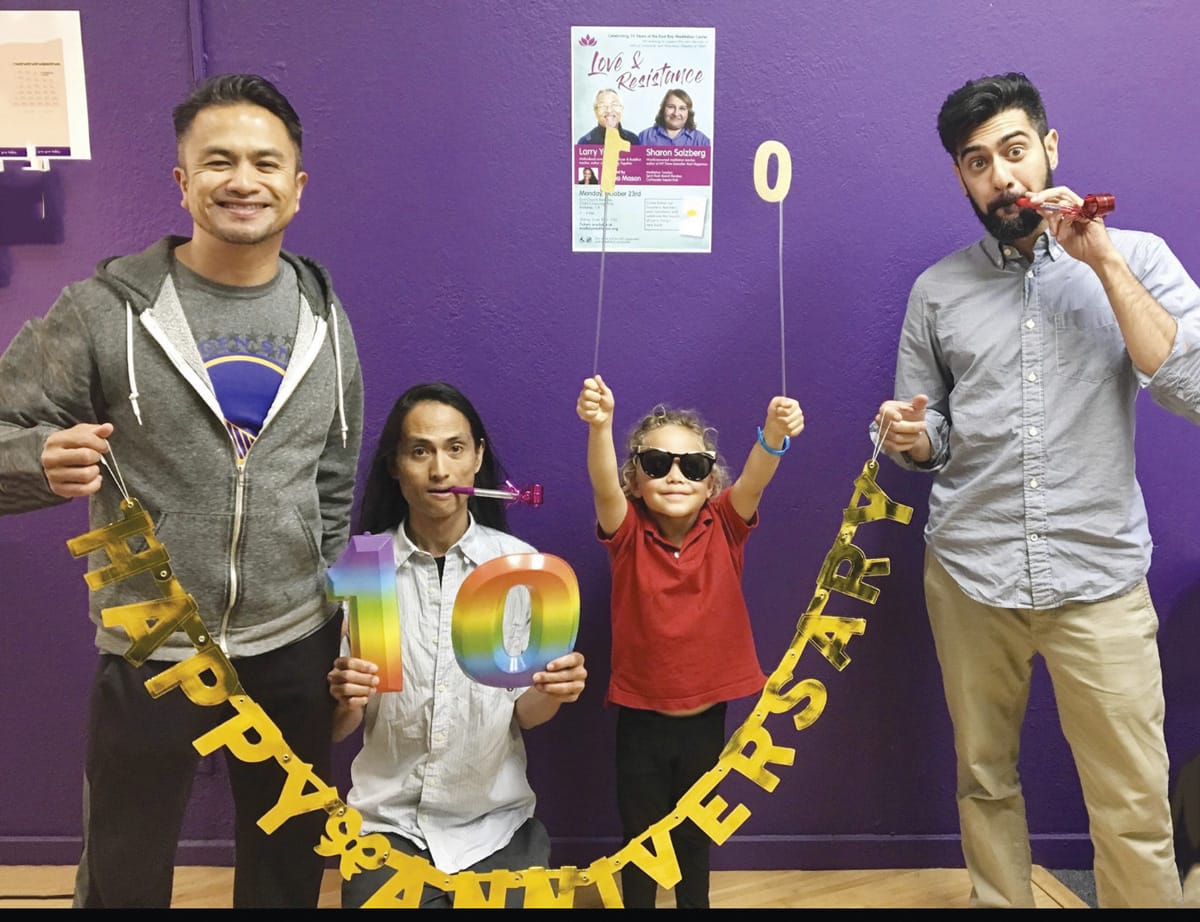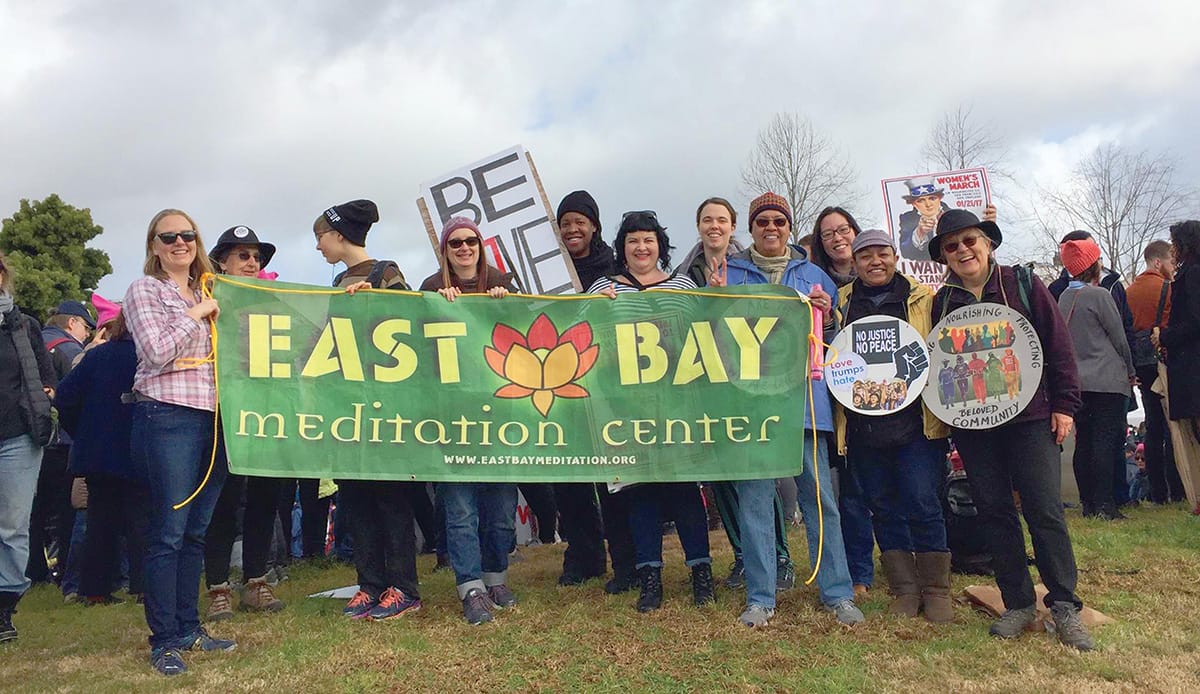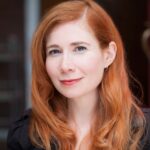In a society where many fight to be seen and heard, Mushim Ikeda sees a great need for well-being for the oppressed through spirituality and community.
“For people in identity groups targeted for severe oppression,” she says, “such as trans-gender folks, people with disabilities, people who are very dark-skinned, people who are really poor or homeless, just to survive, they need to have immense courage. However, surviving isn’t the same as thriving.”
Ikeda is the community coordinator of the East Bay Meditation Center (EBMC) in Oakland, California, which offers meditation and teachings from Buddhist and other wisdom traditions, with a focus on social action, multiculturalism, and diverse populations.
When people are in survival mode, Ikeda says, they need support to even imagine a life in which they aren’t always struggling. “It takes courage to reach out for ways in which you can enjoy ease, creativity, and be in a space where you can relax and feel pleasure. People can get stuck in fight and flight, if that’s what has served them. But I don’t want to always just fight and survive. What kind of life is that?”
EBMC is based on the principle of radical inclusivity, which Ikeda says means creating a space where everyone is welcome and feels safe to practice and experience community. EBMC is viewed by many as a leader and model as American Buddhism changes to meet the needs of people with different backgrounds and life experiences.
“Visiting teachers say this is the most diverse center in the country,” says one participant. Ikeda agrees. “East Bay Meditation Center is unique, but we don’t want it to be.”

Not everyone felt welcome in the mainstream Buddhist meditation centers in the Bay Area. So in the early 2000s, some spiritual practitioners came together to gather ideas about how to do things differently.
“We found that inviting diverse communities into something as intimate as a collective sacred space must be done with a deep commitment to creating the conditions for inclusivity to flourish,” writes one of the founders, Larry Yang, in his book Awakening Together: The Spiritual Practice of Inclusivity and Community.
As soon as we opened our doors, we had already outgrown the space.
Shaping the Leadership Sangha for the future EBMC was a careful process, as it had to reflect a diverse membership, be part of the community, and operate with the same values and principles as the community itself. After several iterations of boards and location prospects, the leadership of EBMC came together with the right mix of chemistry and diversity, and decided their priority was to go directly to the communities they wanted to serve.
“We had two separate town hall meetings, and had pizza and salad, and asked people what they wanted in a meditation center,” says Ikeda. “Going out to the community is really important for an organization. It should be part of every center, because if you’re saying you want to serve people, how do you know you’re giving them what they want?”

The leaders of EBMC asked for feedback about what wasn’t being met in a systemic way. Ikeda says at the top of the list were spaces for specific identity groups to practice, where like-minded people could see themselves represented both in teachers and in fellow sangha members.
Making this a main focus, East Bay Meditation Center opened in Oakland in 2007. “The response was oceanic,” says Ikeda. “As soon as we opened our doors, we had already outgrown the space.” EBMC was on a busy street where practitioners would often do walking meditation on the sidewalk. Yang notes that busy passersby would inevitably stop or slow down, as would passing cars, to take in what was happening. In this bustling city, EBMC was helping the world slow down for a moment through mindfulness practice. It relocated to its current, bigger space in 2012.
Three main identity-based sanghas were established—the People of Color sangha, the Alphabet sangha (named as such to honor the evolving letters/numbers of the LGBTQI community), and the Every Body Every Mind sangha, which welcomes people with disabilities. Other programs at EBMC include the teen sangha, recovery programs, a family day, and a one-year secular mindfulness program for social justice activists called “Practice in Transformative Action.”
When teachers of color like Shahara Godfrey take their place at the front of the room, participants say the effect is transformative.
“I started meditating when I was a teenager and I’m forty-six now,” says a member of the People of Color sangha. “I didn’t find my home sangha until I came here, about ten years ago. Shahara Godfrey was teaching, a person of color at the front of the room. It was the first time I’d seen that. At EBMC, every teaching team must have a person of color. That makes a huge difference.”
Godfrey joined EBMC as a teacher in its early stages and is a member of all three identity-based sanghas. She was nervous when she starting teaching twenty years ago. She didn’t see many people who represented her at the front of the room, and she watched white people ask to be teachers with a confidence she didn’t have. Larry Yang insisted she should be up there too.
“When he said, ‘Now you can teach on your own,’ I was like, ‘You can’t leave me, don’t leave me,’” says Godfrey. “I don’t have those same concerns anymore. After twenty years, I have a little bit of confidence and security.”

The People of Color (POC) sangha, now in its twelfth year, is the oldest weekly group at EBMC. “Since we serve people who may have been rejected by their families of origin or may not have a place to go over the holidays, we’re open then too,” says Ikeda. “We’re both a meditation centre and a community centre, rooted in taking care of beloved community.”
Participants of the POC sangha, which usually attracts about eighty people weekly, say it has changed their lives, even beyond the dharma it offers. “There are times, as a person of color living in this country, where you literally don’t feel safe,” says one participant. “To have space and refuge where we are not only invited, but we’re welcomed with warm, open arms to heal together—you can’t put a dollar amount on that.”
“People feel seen here. It’s like family,” says another participant. “There’s a deep interconnection that happens, especially when people come week after week. When I go into the space, I can let my guard down.”
One of the many ways EBMC translates the dharma beyond its typically white, middle-class presentation is by reframing its language to be more inclusive in terms of culture and identity.
For instance, when Godfrey is teaching for the weekly Alphabet sangha, which sees about fifty participants weekly and has a mailing list of thousands, she is mindful of the pronouns she uses.
We find what lies beyond the layers of our experience by probing deeply into them, not by ignoring them.
“Language is important, especially now that we have such a strong influx of trans and questioning folks,” Godfrey says. “Before I’ll start a talk, I’ll say, ‘Forgive me if I use the wrong pronoun or forget to shift, because it’s a learning curve for me.’ Sometimes if I’m reading a poem, I might change the pronouns, or if I’m giving a quote from the dharma, I’ll say, ‘This is how the Buddha taught. Now, how do we interpret that in a language for us, or in a way that makes sense for us?’ Sometimes, I forget things, or say the wrong word, and the audience will remind me. I say, ‘This is what happens when you get old,’ and people start laughing.”
Yang writes that EBMC values culture as an important part of the spiritual path: “We find what lies beyond the layers of our experience by probing deeply into them, not by ignoring them.” Godfrey says one major advantage of having identity-based sanghas is that it eliminates the need to explain shared culture and experiences. “You have a sense of ‘I don’t have to explain,’” she says. “You understand. It may not be the same experience, but there is somewhat of a universality there.”
Not having to explain is a major reason many people with disabilities come to the Every Body Every Mind sangha. When this group gathers, some people lie on the floor. Others are in wheelchairs. Some stand. Some sit. Whatever you need to be comfortable to practice is what you do, respecting your own access needs and those of others.
“When I’m here, no one stares or asks me what my disability is,” says one participant. “I can just be myself, and not my disability, even though it is a part of me. People just get it.” EBMC is mindful of the needs of this sangha and has adapted its language so the term “sit” is replaced by “meditate” to allow for people of all abilities to meditate in a way they feel comfortable. As well, new iPads with credit card squares for electronic donations are placed at wheelchair height, allowing everyone access to this technology.
“What other center thinks of that?” asks one participant. “It sounds small, but there’s a bit of dignity restored when I feel seen like that.” EBMC is also aware of those with multiple chemical sensitivities and asthma, and so has implemented a strict fragrance-free policy.

One of EBMC’s most groundbreaking programs is the White and Awakening in Sangha program (WAS). Ikeda says this program offers dharma practice through the lens of liberation, which allows those who are part of the dominant white culture to understand what is needed to practice harmoniously and supportively with people of color and multiracial people.
As well, EBMC’s inclusivity extends to issues of class and economic status by using a gift economy structure to support itself. People attending its programs are encouraged to think about how much they are actually able to give to support what they experience at the center, instead of EBMC charging a set price and possibly creating a barrier to practice.
But how does radical inclusivity work when EBMC offers some events and groups that are open to all, and other identity-based sanghas not open to all? Mushim Ikeda says navigating this is one of EBMC’s biggest challenges.
“Each group has its own space and cleans up and makes space for another. However, that is limited, as groups aren’t meeting that way,” she says. “So the challenge becomes how do we invite people to be together in community? And what if the different groups have needs that are opposed to one another?”
One participant says accepting what isn’t working right now is key for the growth of EBMC. “It’s not a perfect space, and it allows for that, for being okay with it not being perfect,” they say. “It’s about growing together. One of the things Larry Yang talks about is learning to break together versus breaking apart. How do we stay, instead of parting ways?”
Yang writes about this in the context of spiritually bypassing, in which practitioners “use the goal of awakening or liberation to rationalize what I call premature transcendence: trying to rise above the raw and messy side of our humanness before we have fully faced and made peace with it. And then we tend to use absolute truth to disparage or dismiss relative human needs, feelings, psychological problems, relational difficulties, and developmental deficits.”
“A spiritual bypass implies a shortcut—and the tendency of the mind to incline toward the pleasantness of obviating the complexity and messiness of human differences by prescribing unconditional harmony and homogeneity upon the collective experience. This artificial imposition of one-sided truth only creates more suffering.”

Ikeda acknowledges that EBMC doesn’t have ready answers to the big questions about how to honor differences while creating community. But it actively works to create ways to be together peacefully and nonviolently, while acknowledging and embracing difference.
“When friction and conflict occur, which is natural with human beings, instead of running away from it and walling ourselves off, how can we work with it in ways that are restorative rather than punitive, in ways that create more understanding and love, and in ways that are reflective of best practices in great social movements such as Black Lives Matter?” she asks. “Instead of saying, we’re all equal, we’re all the same, we’re all human beings, we can acknowledge we’re not all the same. And in an increasingly global world, how can we become curious and learn from our differences?”
To bring groups together, EBMC offers a Maha sangha, a space for all to practice together. “I think what the Maha sangha tries to cultivate is what EBMC stands for and is working for,” says one participant. “Being there means listening and really trying. We can’t please everybody all the time, but keeping that intention open and knowing that it’s there, that’s what we can do right now.”
Creating safe spaces for people of differing needs and backgrounds to come together requires a lot of care about communication styles and how people interact. EBMC offers guidelines to navigate this via its “Agreements for Multicultural Interactions,” a list of best practices posted on its walls.
“These agreements are based in an understanding of how people of goodwill, when we gather together, almost certainly will unconsciously replicate the forms of dominance, oppression, and harm in the wider community and society, just because that’s the default,” says Ikeda, “unless there are interventions, agreements, and practices that begin to change that status quo very consciously.”
The agreements include being willing to try ways of doing things that might not be what you prefer or are familiar with, not speaking for the group, understanding the difference between intent and impact, and using the word “and” instead of “but” in order to acknowledge and honor multiple realities. The agreements also ask that people refrain from blaming or shaming themselves and others, to consider “moving back” if you tend to speak often, to practice mindful listening, to respect the confidentiality of those in the room, and to know you have the right to pass if you don’t wish to speak.
“The agreements are a way we’re creating structures that aren’t dependent on personality,” says Ikeda. “They create safety so that people can develop spiritually and form spiritual friendships and ties with others in this area.”
“To have a radical acceptance for individuals, no matter what, is the work the EBMC is doing and doing well,” says one participant, “while making mistakes and learning from those mistakes, and figuring out how to move forward in such a way as to hold that responsibility with tenderness.”

EBMC is constantly evolving in order to face its challenges and strengthen what is working. Ikeda says future plans include more programs that serve different kinds of needs, continuing to practice a culture of humility, and examining its decision-making processes.
East Bay Meditation Center is a lot of things to a lot of different people. As Larry Yang writes, “When we create practice opportunities so that both culturally-specific populations and the larger community can gather in cultural mindfulness and awareness of our shared humanity, we are invited to move from the question, ‘Who am I?’ to a broader exploration of ‘Who are we? What kind of path is possible leading to collective liberation?’ ”
Yet amid EBMC’s victories and its challenges, Ikeda says she always remembers that a good and abundant life also has to include pleasure and happiness. “I’m really into having fun,” she says. “Playfulness has a lot to do with imagination. Imagination is a part of creativity. And we can’t create something new unless we also play sometimes. It’s not just playfulness in the sense of being silly. Someone said art is creating a way where there is no way. So, that’s what we want to do at EBMC. We want to create ways where there have formerly been no ways.”

